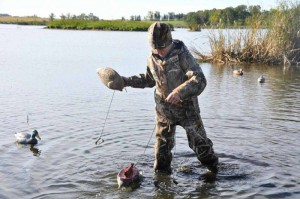 Anyone interested in buying a kayak will find out that there’s a multitude of kayak types available on the market. Be sure to perform a good amount of research before committing to your first kayak. It is also a good idea to rent the style of kayak that you are most interested in before actually buying it in order to get a sense of how it performs on the water.
Anyone interested in buying a kayak will find out that there’s a multitude of kayak types available on the market. Be sure to perform a good amount of research before committing to your first kayak. It is also a good idea to rent the style of kayak that you are most interested in before actually buying it in order to get a sense of how it performs on the water.
Seat Placement And Balance
There are hundreds of kayak brands. What matters most is the type of kayak that you purchase. The type refers to the kayak’s hull or body shape and characteristics. Search for kayaks that have the seat as close to the center of the kayak track as possible. Seats placed more towards the rear of the kayak tend to be more challenging to balance on the water. Any beginning kayaker will be concerned with maintaining balance so he should immediately discount all kayaks that do not have seats in the center.
The Importance Of A Large Cockpit
Kayakers who are taller than average will want a kayak with a spacious and large cockpit. This will make it easier to get in and out of the boat, which is often a challenge for larger people. If you buy a kayak with too small of a cockpit, you’ll likely sour on the idea of kayaking because you’ll dread the entry and exit process and you won’t be able to store all the materials that you want to bring with you on your kayak outings.
Recreational Kayaks
Beginners should opt for a recreational kayak that empowers them to paddle through the water at a casual pace. Recreational kayaks can be used in rivers, ponds, salt marshes and ocean bays. They can fit between one and three occupants. Recreational kayaks are ideal for taking pictures of the natural environment and for those who want to fish. They are the widest kayaks available, which makes them the easiest to control. They also have the largest possible cockpit openings so that you can get in and out without a hassle. Most recreational kayaks are 12 feet long or less so that they can be lifted with ease. This style of kayak is quite affordable so it is perfect for beginning kayakers. Most recreational kayaks will cost between $300 and $900.
Plastic Kayaks Vs. Fiberglass Kayaks
In terms of the kayak’s construction, the two top choices are fiberglass and plastic. Plastic is more durable but it also scratches much easier. Fiberglass has a greater chance of fracturing or puncturing and repairing either of these problems will be a royal pain for a beginning kayaker. Keep in mind that kayaks do run into rocks and other objects while on the water, so plastic is the better of the two material choices.
Kayak Widths And Lengths
The kayak width will decide the amount of paddling that you need to perform to get the boat moving and also determine its stability in the water. Kayaks on the longer side with less width will be able to move through the water with minimal paddling effort but they’ll be more difficult to turn. Shorter and wider kayaks will be much more stable in the water and take on waves without problems but they’ll also require more paddling effort.
Kayak Colors
Don’t underestimate the importance of your kayak’s color. While it might seem trivial, it is actually quite important. If you overturn or if you become stranded, you’ll want a kayak that is bright in color so that it can be noticed from far distances. This will help others see you and come to your rescue.
image credit: By Entheta (Own work) [CC-BY-SA-3.0 (http://creativecommons.org/licenses/by-sa/3.0) or GFDL (http://www.gnu.org/copyleft/fdl.html)], via Wikimedia Commons
